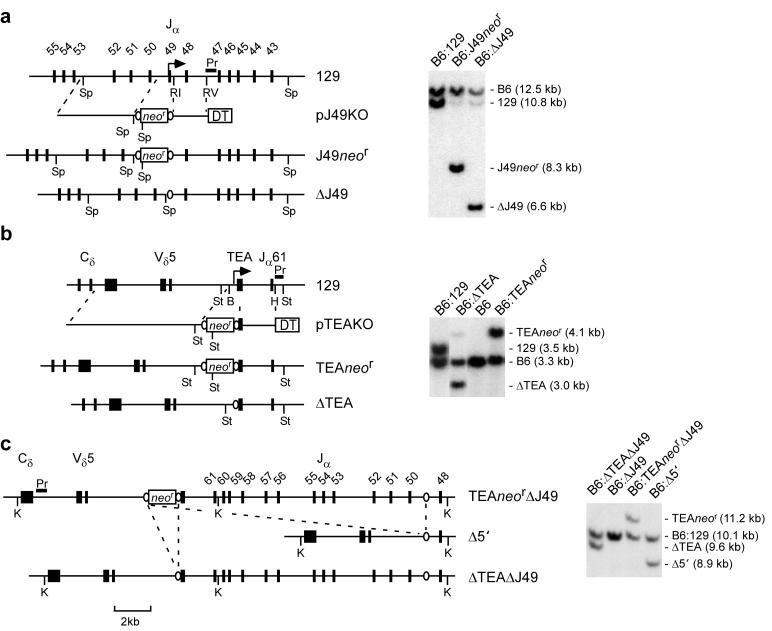Figure 2.
Generation of TEA and Jα49 promoter-deleted mice. Strategies for generation of ΔJ49, ΔTEA, ΔTEAΔJ49 and )5′ mice. V, J, C and TEA exons (filled rectangles) on the wild-type 129 allele are shown, as are neomycin resistance (neor) and diptheria toxin (DT) cassettes (open rectangles) and loxP sites (ovals) of targeting constructs pJ49KO and pTEAKO. Restriction sites are: Sp, SpeI; RI, EcoRI; RV, EcoRV; St, StuI; B, BglII; H, HpaI; K, KpnI. The Southern hybridization probes (Pr) are identified. (a) Genomic DNA isolated from B6:129 ES cells, B6:J49neor ES cells, and B6:ΔJ49 ES cells were digested with SpeI and analyzed by Southern hybridization. (b) B6:TEAneor mice were bred with CMV-Cre transgenic mice (B6 background). As compared to a B6:129 control, Southern hybridization analysis of StuI digested genomic DNA identified progeny carrying a TEAneor allele (B6:TEAneor), two B6 alleles (B6), or a ΔTEA allele (B6:ΔTEA). (c) B6:ΔJ49 ES cells were retargeted to introduce a loxP-flanked neor cassette in place of TEA (B6:TEAneorΔJ49). Cre-mediated recombination in vitro generated B6:Δ5′ and B6:ΔTEAΔJ49 clones, as revealed by Southern hybridization of KpnI digested genomic DNA.

